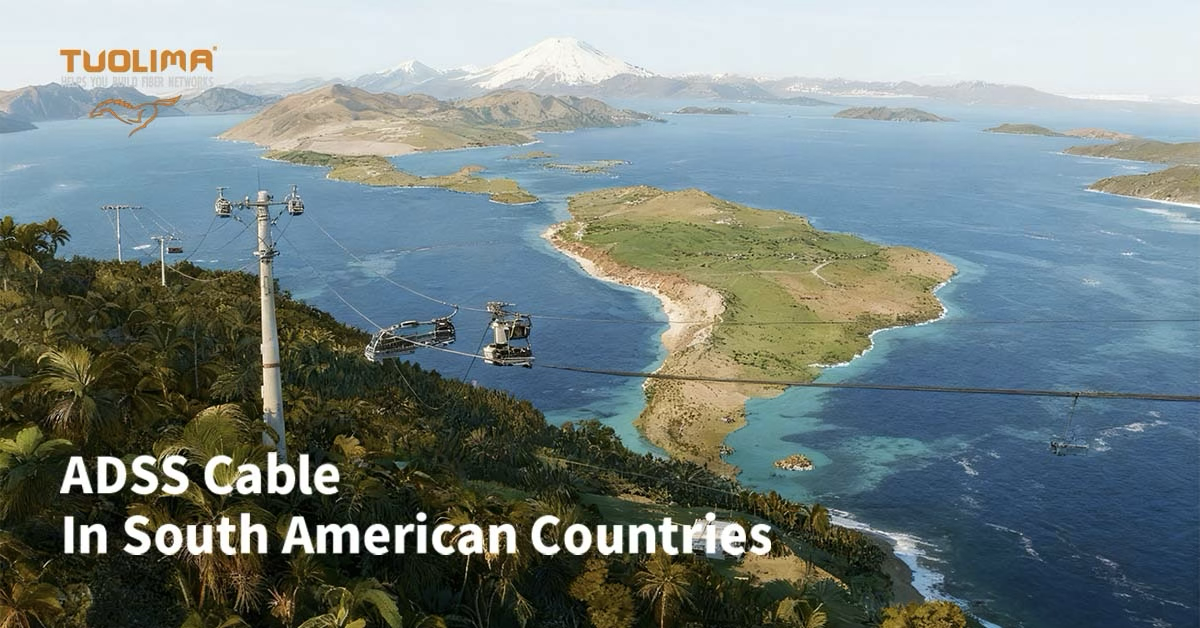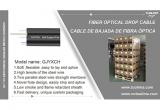For over two decades, Tuolima has been at the forefront of optical cable technology, engineering robust solutions for the world’s most demanding environments. This article explores how All-Dielectric Self-Supporting (ADSS) cables provide the ideal, future-proof solution for expanding power and communication networks across South America’s diverse and extreme landscapes.

1. South America’s Geography, Climate, and Demand for Resilient Cabling
South America is a continent of contrasts. From the Andes peaks and Atacama Desert to the humid Amazon rainforest and vast coastlines, environmental challenges push infrastructure to its limits.
In South America, an ordinary fiber-optic cable typically lasts only 5.7 years due to UV degradation.
O&M (operation & maintenance) costs can soar to US$32,000 per kilometer over its lifespan.
Main Challenges:
Extreme Weather: Heavy rainfall, flooding, hurricanes, and intense UV exposure.
Temperature Fluctuations: Expansion and contraction of materials in mountainous climates.
High Humidity & Salinity: Salt mist in coastal areas and mold in rainforests accelerate degradation.
Remote Terrain: High costs and complexity in mountains and jungles.
These factors create a pressing demand for cables that are durable, lightweight, and resistant to environmental stress, ensuring long lifespans with minimal maintenance.
2. Typical Application Scenarios for ADSS Cable
ADSS cables thrive in environments where conventional cables fail:
Long-Span River Crossings – Efficient deployment across rivers like the Amazon without messenger wires.
Mountainous Terrain – Easily strung across valleys and peaks without trenching rocky soil.
High-Voltage Power Lines – Installed directly on transmission towers, leveraging existing infrastructure.
Desert & Coastal Routes – Immune to corrosion from sand and salt in areas like the Atacama Desert and Brazilian coasts.
3. Applications in Power and Communication
In Power Utilities:
Essential for smart grids.
Enables SCADA systems, teleprotection, and real-time monitoring.
Creates secure, private utility communication networks.
In Telecommunications:
Accelerates FTTH and 5G backhaul deployment.
Avoids high costs of trenching and new permits.
Brings broadband to both urban and remote communities.
4. Comparison: ADSS vs. Other Cables

ADSS: Non-metallic, self-supporting, corrosion-free, ideal for aerial deployment.
GYFTY: Good for duct/underground installation, but less effective in harsh outdoor environments.
GYTS: Steel tape armored; vulnerable to corrosion and unsuitable near power lines.
Drop Cable: Cost-effective for FTTH, but not suited for long spans or power corridors.
Key Takeaway: ADSS is the superior choice for aerial deployment, especially in harsh climates and power line corridors.
5. Advantages of ADSS Cable
All-Dielectric Construction – No EMI, lightning-proof, and corrosion-resistant.
Self-Supporting Design – Handles spans of 1000m+ without extra support.
Cost-Effectiveness – Uses existing transmission towers, cutting civil works and land costs.
Fast Installation – Lightweight, suitable for helicopter or ground stringing.
Long Lifespan – 25–30 years, tested per IEC 60794 and IEEE 1222.
Excellent Performance – Low attenuation, high bandwidth, future-ready for modern networks.
6. Frequently Asked Questions (FAQ)
Q1: What is the typical lifespan of ADSS cable?
A: 25–30 years under IEC 60794 and IEEE 1222 standards. Tests show attenuation ≤0.1 dB/km over decades.
Q2: How does ADSS perform during lightning strikes?
A: Its non-metallic design means it does not attract lightning, ensuring continuity even during storms.
Q3: What is the maximum span in mountainous areas?
A: Up to 1000m or more, depending on design.
Q4: Can ADSS support 5G backhaul?
A: Yes. It provides high-capacity links essential for 5G and broadband expansion.
Q5: Is installation on live power lines safe?
A: Yes, using helicopter-assisted stringing or controlled ground crew tensioning with hot-line tools.
Navigating South America’s infrastructure challenges requires a partner with proven expertise. With over 20 years of specialization in ADSS technology, Tuolima delivers cables engineered to withstand UV, storms, humidity, and rugged terrain—ensuring resilience, performance, and strong ROI.
Contact us today to explore ADSS solutions for your South American project.
Related Products
IP68 Fiber Optic Splice Closures — Designed to provide secure and reliable protection for fiber optic joints
Aug 02-2024

Enhancing Campus Connectivity: GJYXCH Fiber Optic Cable in Educational Networks
Jan 09-2024

Elevating Urban Infrastructure: GJYXCH Fiber Optic Cable in Smart City Networks
Jan 07-2024